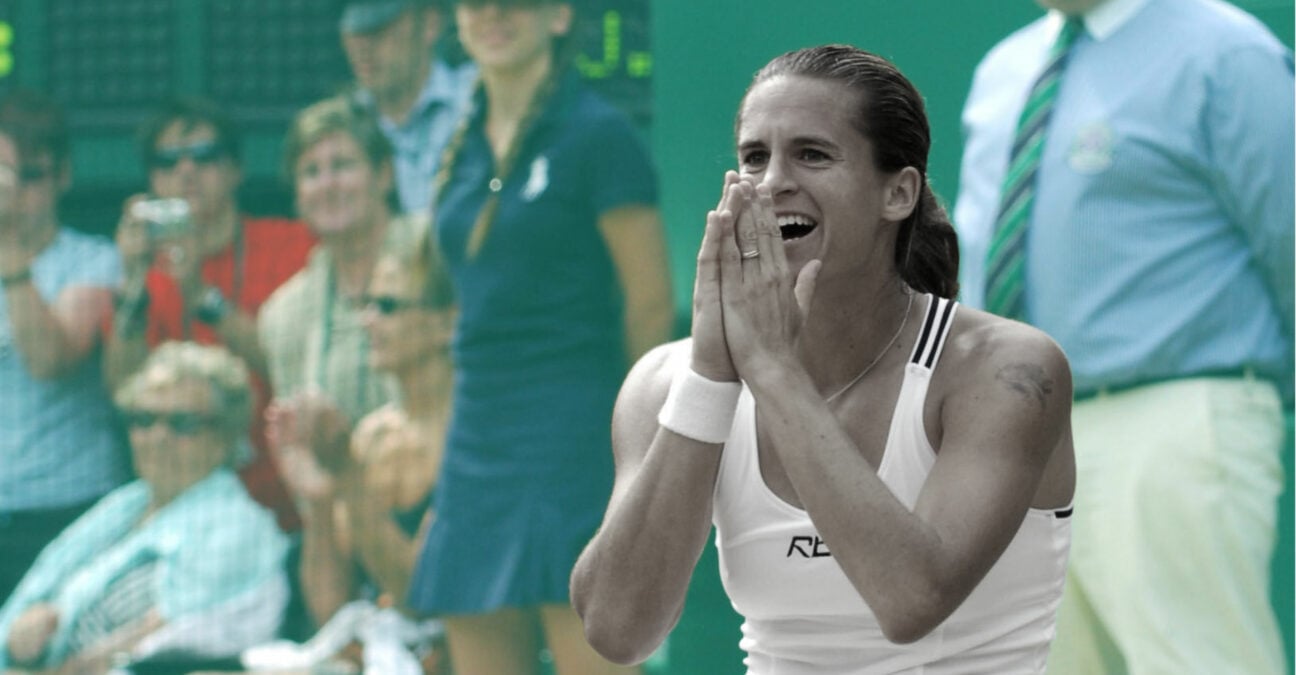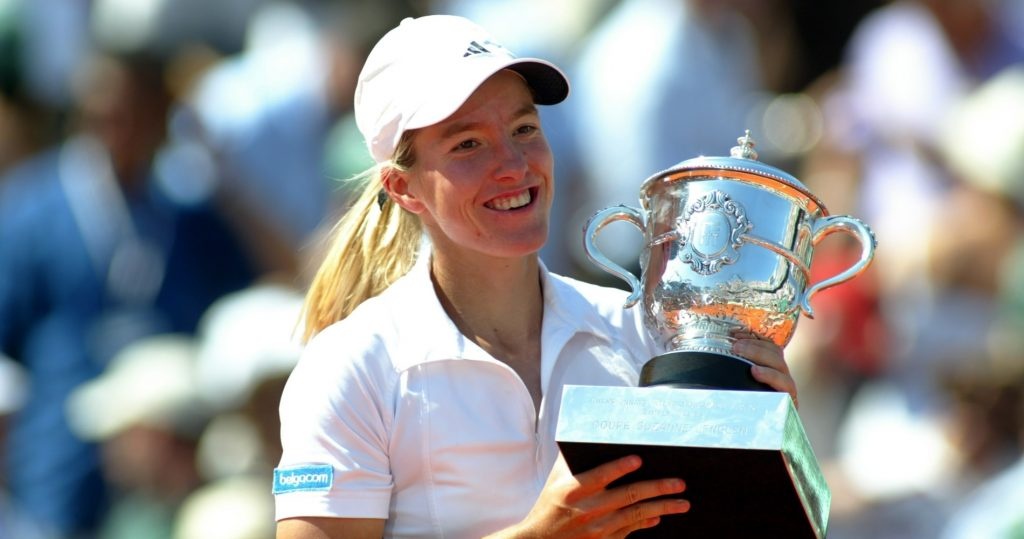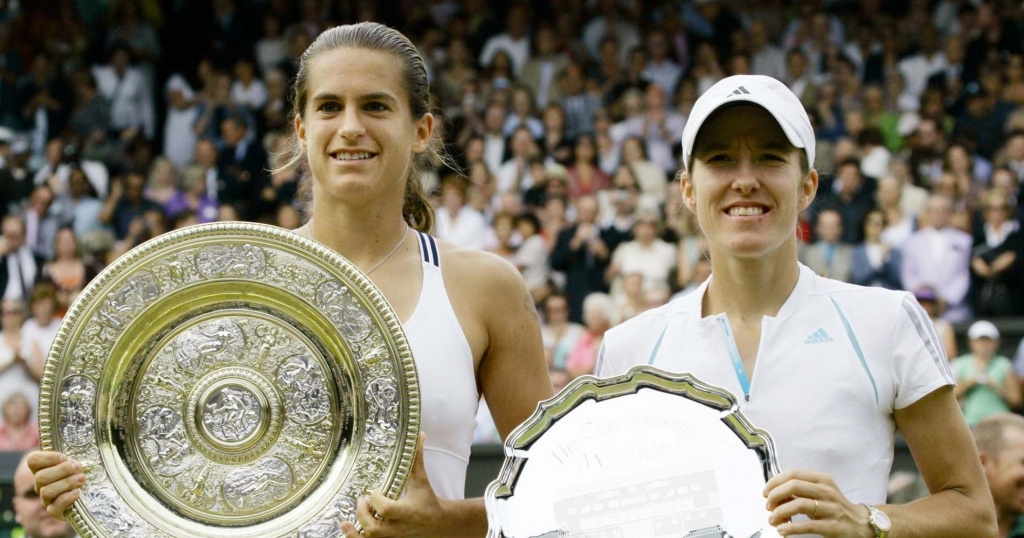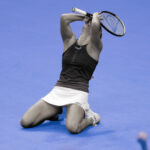July 8, 2006: The day Amelie Mauresmo justified her status as world No 1 by winning Wimbledon
Every day, Tennis Majors takes you back in time to relive a tennis event which happened on this specific day. On this day in 2006, Amélie Mauresmo won her second Grand Slam title, beating Justine Henin in the Wimbledon final to finally silence her critics
 Amélie Mauresmo, On this day 07/08
Amélie Mauresmo, On this day 07/08
What exactly happened on this day?
On this day, July 8, 2006, Amelie Mauresmo became the first French player to triumph at Wimbledon since Suzanne Lenglen in 1925. In the final, she defeated Justine Henin (2-6, 6-3, 6-4) in a spectacular clash of one-handed backhands. Mauresmo, who had reclaimed the world No 1 spot after claiming her first Grand Slam title in Melbourne, confirmed her hold on the tour in 2006, while depriving the Belgian of the only Grand Slam title she had yet to win.
The players: Amelie Mauresmo and Justine Henin
- Amélie Mauresmo: The world No 1 seeking to justify her top billing
Amelie Mauresmo was born in 1979 in France. She made a name for herself in 1999, when, ranked No 29 in the world, she reached the Australian Open final, defeating world No 1 Lindsay Davenport in the semi-final (4-6, 7-5, 7-5) before losing to Martina Hingis (6-2, 6-3). That year, she also entered the top 10 for the first time and claimed her first WTA singles title in Bratislava. She continued her upward trajectory in 2001, winning four trophies on the tour and going as far as the quarter-finals at the US Open (lost to Jennifer Capriati, 6-3, 6-4).
Between the start of 2002 and the end of 2005, displaying an aggressive game based on a good serve and a solid one-handed backhand, Mauresmo claimed 12 titles (including six ‘Tier Is’, the most important events on the WTA Tour outside of the Grand Slams and the WTA Championships), and she reached three Grand Slam semi-finals as well as nine quarter-finals, but never reached a Grand Slam final.
Her lack of success at the Majors saw her being criticised for her alleged mental weakness and her becoming world No 1 in September 2004 became quite controversial.

At the end of 2005, Mauresmo eventually won a big title, claiming the WTA Championships against countrywoman Mary Pierce (5-7, 7-6, 6-4). In 2006, she eventually won a Grand Slam title at the Australian Open, defeating Henin, who retired when she was down 6-1, 2-0. On March 20, she became world No 1 for the second time.
After a disappointing loss in the fourth round at Roland-Garros, Mauresmo had to perform well at Wimbledon to silence the critics who said that she got lucky in Australia and that she did not deserve to be ranked No 1 in the world.
- Justine Henin: The five-time Grand Slam champion chasing her first Wimbledon title
Justine Henin, born in 1982 in Belgium, had been one of the dominant players on the women’s tour since 2003. After a few years of performing well without ever winning a major event, she hired Pat Etcheberry as a fitness coach at the end of 2002. The hard work she put in paid off the following year, when she prevailed at Roland-Garros as well as the US Open, each time defeating her countrywoman and rival Kim Clijsters in straight sets.
Her game, based on variety, especially her wonderful one-handed backhand, a rare feature in modern women’s tennis, not only delighted tennis purists and fans but also made her the best clay-court player of her time. She had claimed three titles at Roland-Garros, in 2003, 2005 and 2006.

After becoming world No 1 for the first time on October 20, 2003, Henin had already held that spot for a total of 45 weeks. Outside of the French Open, she had also won the US Open crown in 2003 and triumphed at the Australian Open in 2004, claiming a total of five Major titles.
Despite having reached the final in 2001 (defeated by Venus Williams, 6-1, 3-6, 6-0), and the semi-finals twice, Wimbledon remained the only Grand Slam title missing from her resume. She had also won a singles gold medal at the 2004 Athens Olympics and joined forces with rival Clijsters to win the 2001 Fed Cup under the Belgian flag.
The place: Wimbledon
Wimbledon is the oldest and the most prestigious tennis tournament in the world. Held by the All England Lawn Tennis and Croquet Club since 1877, it moved into its current location in 1922, the same year when the Centre Court was built. Considered by many as the most intimidating court in the world, with its famous Rudyard Kipling quote above the entrance (“If you can meet with triumph and disaster and treat those two impostors just the same”), the Centre Court had seen the best players of all time competing for the title.

After the US Open switched to clay and then hard court in the 1970s, and after the Australian Open switched to hard court in 1988, Wimbledon remained the only Grand Slam tournament to be played on grass, a surface that is usually more suitable for serve-and-volley players. Not only did Wimbledon keep its surface, but it also maintained century-long traditions such as its all-white dress code.
The facts: Mauresmo comes from a set down to win in three
The 2006 Wimbledon final was a repeat of the Australian Open final between Mauresmo and Henin. In Melbourne, Henin, feeling sick, retired when Mauresmo was leading 6-1, 2-0, depriving her opponent from the satisfaction of winning her long-awaited first Grand Slam title on an actual match point.
In London, Mauresmo had made her way to the final with less pressure than usual from the French press, whose attention was focussed on the national soccer team reaching the World Cup final.
This time, the Belgian was not hampered by illness. She had just claimed the French Open title without dropping a single set, and at the All England Club, she had still not lost a set while racing through her first six matches. She broke the world No 1’s serve in the opening game and quickly took the first set 6-2. It looked like Mauresmo’s nerves were going to get the better of her again, but she fought back brilliantly in the second set. Playing very aggressively, the Frenchwoman, who had already scored a three-set win in her semi-final against Maria Sharapova (6-3, 3-6, 6-2), sealed the set 6-3 to even the match and push the match into a decider.
In the final set, Mauresmo confidently took an early lead and managed to hold on to it until the end, not concealing a single break point until the end of the match. At 5-4, 30-30, Mauresmo hit a beautiful backhand volley to obtain a championship point. A few seconds later, at 40-30, Henin netted one last forehand. This time, Mauresmo could kneel on the grass and enjoy the experience of winning a Grand Slam title in the way it is supposed to be won.
“I hope people will stop talking about my nerves now”, said the new Wimbledon champion during the trophy ceremony.

What next? Mauresmo and Henin’s careers hampered by injuries in the future
Mauresmo would remain on top of the WTA rankings until November 12, when Henin would reclaim the throne. From 2007, the Frenchwoman, hampered by numerous injuries, would slowly decline, She would exit the top 10 in 2007 and would claim only two more titles on the tour before retiring at the end of 2009.
Henin would never triumph at Wimbledon. In 2006, after losing to Sharapova (6-4, 6-4) in the US Open final, she would finish the year by winning the WTA Championships against Mauresmo (6-4, 6-3). In 2007, she would skip the Australian Open, but would then win 10 out of 14 tournaments she played, including Roland-Garros, the US Open and the WTA Championships. That year, she would also become the first woman in WTA history to earn more than $5 million in prize money. In 2008, Justine Henin would stun the tennis world by announcing her retirement at the young age of 25.
The following year, on September 22, 2009, Henin would confirm her comeback to the tour in 2010. Unfortunately, she would fall and injure her elbow at Wimbledon, while facing Clijsters. which would force her to put an early end to her 2010 season. She would never recover from this injury. She would retire once and for all after the 2011 Australian Open, where she would lose in the third round against Svetlana Kuznetsova (6-4, 7-6). Henin ended her career with a total of seven Grand Slam titles and 117 weeks as world No 1.

















